Recent Posts
Navigating the Aftermath: Best Practices for Handling and Disposing of Fire Debris
4/16/2024 (Permalink)
The aftermath of a fire is a challenging landscape, marked by devastation and the need for careful restoration. Beyond the visible damage to structures, there's the often-overlooked task of handling and disposing of fire debris. In this blog, we'll explore best practices for navigating this critical aspect of post-fire cleanup, ensuring not only the efficient removal of debris but also environmental responsibility.
Safety First
Before diving into debris removal, prioritize safety. Ensure the site is structurally stable and free from hazards. Wear appropriate protective gear, including gloves and masks, to guard against potential contaminants.
Conduct a thorough assessment of the debris, categorizing materials based on their composition. Documenting the types of debris and their quantities aids in planning and facilitates proper disposal procedures.
Separation of Materials
Sort debris into categories such as wood, metal, concrete, and hazardous materials. This segregation streamlines the disposal process, allowing for more efficient recycling and minimizing the environmental impact.
Identify and handle hazardous materials with utmost care. This may include asbestos, chemicals, or other substances that require special disposal considerations. Engage professionals if needed to ensure safe removal.
Recycling Opportunities
Explore recycling options for materials like metal, concrete, and wood. Many municipalities have recycling programs, and salvaging reusable materials not only benefits the environment but also reduces disposal costs.
For non-recyclable materials, adhere to local landfill regulations. Dispose of debris responsibly by following guidelines for waste separation and proper landfill procedures. Compliance ensures a smoother disposal process.
Consult Local Regulations
Familiarize yourself with local regulations governing debris disposal. Different areas may have specific rules regarding waste disposal, and compliance helps avoid potential fines and legal issues.
Some communities offer resources for debris disposal, such as organized cleanup events or designated drop-off locations. Check with local authorities or waste management services to leverage these community resources.
Reducing Environmental Impact
Implement practices to minimize the environmental impact of debris disposal. This may include erosion control measures, dust suppression, and strategies to prevent debris from entering waterways.
Engage professional debris removal services for large-scale or hazardous debris. These experts have the equipment and expertise to handle various types of debris, ensuring efficient and safe removal. Once debris is removed, undertake site remediation to restore the land to its pre-fire condition. This may involve soil testing, erosion control, and replanting vegetation to mitigate the environmental impact.
Handling and disposing of fire debris is a pivotal aspect of the restoration process that demands a thoughtful and responsible approach. By prioritizing safety, following best practices, and adhering to local regulations, the post-fire cleanup becomes not only a practical necessity but also a step toward environmental stewardship. As communities work to rebuild, the careful management of debris ensures that the restoration journey is marked not only by recovery but by a commitment to sustainable practices that benefit both people and the planet.
Spotting Black Mold: 3 Warning Signs and Effective Removal Methods
3/14/2024 (Permalink)
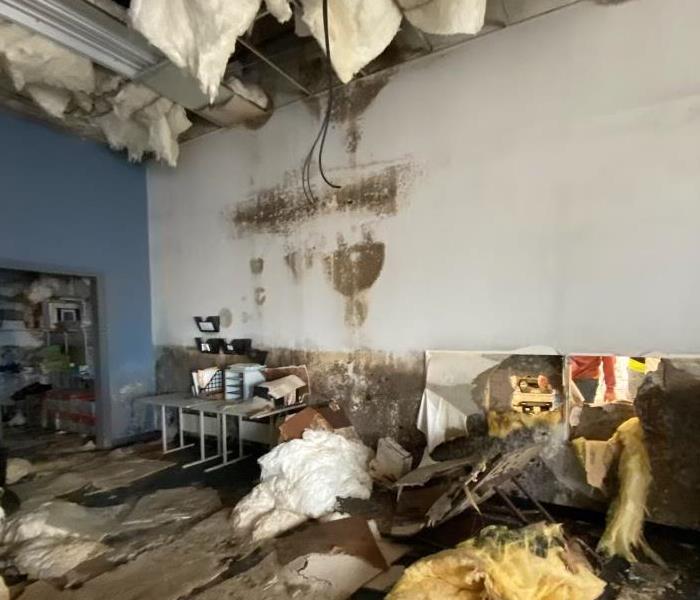 Recognizing the signs of black mold early is crucial for swift and effective remediation.
Recognizing the signs of black mold early is crucial for swift and effective remediation.
Black mold, scientifically known as Stachybotrys chartarum, is a type of mold that can compromise indoor air quality and cause extensive damage to your property. Recognizing the signs of black mold early is crucial for swift and effective remediation. In this blog, we'll explore three key warning signs of black mold and share practical steps on how to get rid of it.
Signs of Black Mold
Distinctive Appearance:
Black mold often appears greenish-black and has a slimy or powdery texture. While its name suggests a specific color, it can also manifest in dark green or gray hues. It tends to grow in clusters and may spread quickly if left unchecked.
Musty Odor:
Black mold produces a distinct musty odor that can permeate indoor spaces. If you notice an unpleasant, earthy smell, particularly in areas prone to dampness or water damage, it could be an indicator of black mold presence.
Visual Clues:
Inspect surfaces for visual clues such as dark stains, discoloration, or mold growth. Check hidden and less frequently visited areas, as black mold often thrives in damp and poorly ventilated spaces.
How to Get Rid of Black Mold
1. Identify and Address Water Source:
Black mold thrives in damp environments, so the first step is to identify and address any water sources contributing to the mold growth. Fix leaks, repair water-damaged areas, and ensure proper ventilation to reduce moisture levels.
2. Protective Gear and Ventilation:
Before starting the cleaning process, equip yourself with protective gear, including a mask, gloves, and goggles. Open windows and doors to enhance ventilation during the cleaning process.
3. Clean with Mold-Killing Solutions:
Use mold-killing solutions such as commercial mold removers to clean affected surfaces. Scrub the mold off hard surfaces and remove porous materials like drywall or insulation if extensively contaminated.
4. Thorough Drying:
After cleaning, ensure thorough drying of the affected areas. Dehumidifiers and fans can help accelerate the drying process, reducing the likelihood of future mold growth.
5. Regular Inspections:
Regularly inspect your home for signs of moisture and promptly address any water-related issues. Conduct routine checks in areas prone to dampness, such as basements, bathrooms, and attics.
Professional Assistance
While tackling small-scale black mold issues may be feasible for homeowners, larger infestations or widespread contamination may require professional intervention. SERVPRO® experts have the knowledge, experience, and specialized equipment to assess, remediate, and ensure the complete removal of black mold.
In conclusion, early detection and proactive measures are key to addressing black mold. By staying vigilant and implementing effective cleaning methods, you can create a better living environment for you and your loved ones.
Water Damage Recovery and Cleanup Tips for Commercial Kitchens
2/20/2024 (Permalink)
 By following these tips and partnering with professionals like our SERVPRO® team, businesses can minimize downtime and ensure a quick recovery.
By following these tips and partnering with professionals like our SERVPRO® team, businesses can minimize downtime and ensure a quick recovery.
Water damage incidents in commercial kitchens can bring operations to a halt and pose many significant challenges. At SERVPRO®, we understand the critical nature of swift and efficient cleanup in these environments. In this guide, we'll provide essential recovery and cleanup tips tailored specifically for commercial kitchens facing water damage.
Safety First
When confronted with a water leak or flood, prioritize safety. Immediately shut off the water supply and power sources to prevent further damage and ensure the safety of employees and occupants. Evacuate if necessary and ensure no one enters the affected area until it's deemed safe.
Quick Response and Damage Assessment
Time is of the essence in such emergencies. Contact professional restoration services like SERVPRO of Northeast Tucson immediately to begin the cleanup process promptly. Trained professionals will swiftly assess the extent of water damage, inspect affected areas, and develop a tailored restoration plan for your commercial kitchen.
Water Extraction and Drying
Utilize specialized water extraction tools and drying equipment to remove excess water from surfaces, flooring, and hard-to-reach areas. Thorough drying is crucial to prevent mold growth and structural damage. Industrial-grade dehumidifiers and air movers can facilitate the drying process effectively.
Salvaging Equipment and Inventory
Have trained professionals evaluate the damage to kitchen equipment. Some items may be salvageable with proper cleaning and restoration techniques. Assess food inventory for contamination due to water exposure and discard any compromised items to prevent risks to occupants.
Thorough Cleaning and Sanitization
Employ professional-grade cleaning agents and techniques to sanitize surfaces, equipment, and affected areas thoroughly. Implement antimicrobial treatments to prevent mold growth in moisture-prone areas and ensure a safe, sanitized kitchen environment.
Repair and Restoration
Address any structural damage caused by water, such as damaged walls, flooring, or cabinets. Work with restoration professionals to restore these elements. Ensure all kitchen systems, including plumbing and electrical components, are thoroughly inspected and restored to full functionality.
Preventive Measures for Future Incidents
Implement a routine maintenance schedule for plumbing, equipment, and kitchen infrastructure to prevent future water damage incidents. Educate kitchen staff on preventive measures and emergency protocols to minimize the risk of water-related disasters.
Why SERVPRO® for Commercial Kitchen Water Damage Restoration?
Our 24/7 emergency service ensures immediate response to mitigate water damage and restore normalcy to your commercial kitchen swiftly. With specialized expertise in commercial water damage restoration, our professionals deliver efficient and effective solutions using state-of-the-art equipment. We understand the unique challenges of commercial kitchens and provide customized restoration plans to meet specific needs.
Recovering from water damage in a commercial kitchen requires a comprehensive approach and professional expertise. By following these tips and partnering with professionals like our SERVPRO® team, businesses can minimize downtime and ensure a quick and efficient recovery.
Strategies for Dealing with Water Damage Post-Storms
1/16/2024 (Permalink)
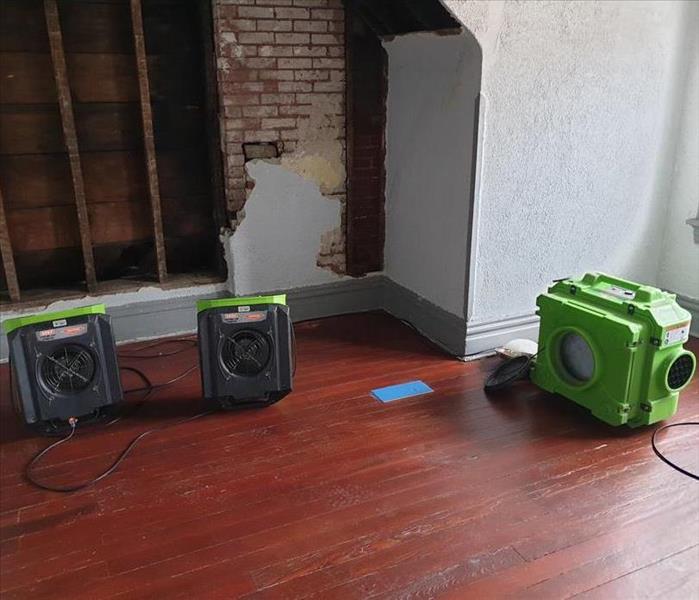 Don't let water damage from storms overwhelm you.
Don't let water damage from storms overwhelm you.
Storms bring not only heavy rains and powerful winds but also the potential for water damage to your property. Whether it's a minor leak or significant flooding, dealing with water damage after a storm can be overwhelming. At SERVPRO of Northeast Tucson, we understand the challenges homeowners face in such situations, and we're here to guide on coping with water damage effectively.
1. Safety First
Before assessing the damage, prioritize safety. Ensure the area is safe to enter, turn off electrical power if necessary, and wear protective gear such as gloves and boots to prevent potential hazards.
2. Assess the Extent of Damage
Survey your property to evaluate the extent of water damage. Check for standing water, soaked belongings, wet walls, ceilings, and flooring. Take photographs or videos to document the damage for insurance purposes.
3. Promptly Remove Standing Water
Remove standing water using pumps or wet vacuums to prevent further damage and mold growth. Ensure proper ventilation to aid in drying out the affected areas.
4. Salvage What You Can
Attempt to salvage items that are not extensively damaged. Move wet belongings to a dry area to prevent further deterioration. However, exercise caution with items that may have been contaminated by floodwaters.
5. Dry Out the Affected Areas
Thoroughly dry affected areas using dehumidifiers and fans. Pay attention to hidden spaces like wall cavities and under flooring to prevent moisture retention and mold growth.
6. Prevent Mold Growth
Act quickly to prevent mold growth by applying antimicrobial treatments to affected areas and ensuring proper ventilation. Monitor for any signs of mold and address them promptly.
7. Contact Professionals for Restoration
For extensive water damage or if you're unsure about handling the situation, it's advisable to seek professional help. SERVPRO of Northeast Tucson, Oro Valley/Marana East offers specialized water damage restoration services, utilizing advanced equipment and expertise to efficiently restore your property.
8. Work with Your Insurance Company
Contact your insurance provider to report the damage and initiate the claims process. Document the damage and keep records of all communication with your insurer. Our SERVPRO® team can assist you in navigating the insurance claims process.
9. Take Preventative Measures
After restoration, take preventive measures to avoid future water damage. Regularly inspect your property for leaks, ensure proper drainage, and maintain gutters and downspouts.
Coping with water damage after storms requires swift action and attention to detail. By following these strategies, you can mitigate the impact of water damage on your property. However, for comprehensive restoration and peace of mind, enlisting the help of professionals like our SERVPRO® team is invaluable.
Don't let water damage from storms overwhelm you. Contact SERVPRO of Northeast Tucson, Oro Valley/Marana East for expert assistance in restoring your property to its pre-damaged condition. We're here to help you navigate through the challenges and restore your home to normalcy.
Tucson's Battle with Wildfires: Understanding, Preventing, and Recovering from Fire Damage
11/21/2023 (Permalink)
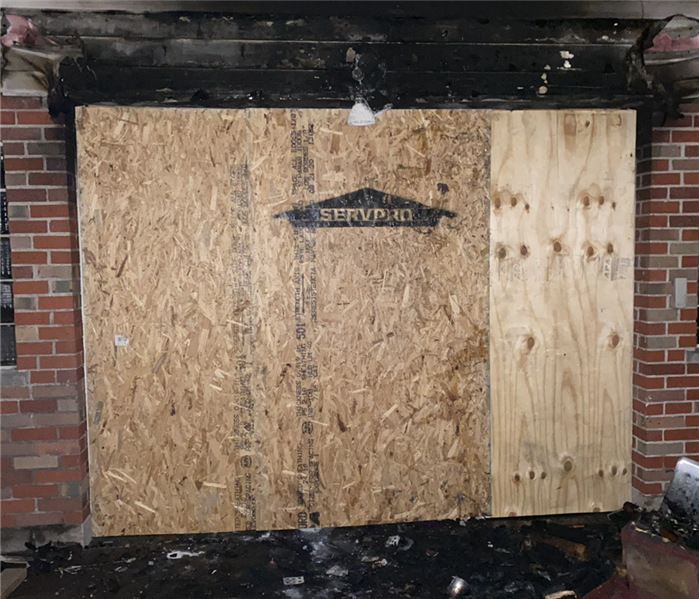 With us, you can trust it'll be "Like it never even happened."
With us, you can trust it'll be "Like it never even happened."
Living in the picturesque landscapes of Tucson, AZ, we enjoy the beauty of the desert but also face unique challenges posed by nature. Wildfires, notorious in our area, are one of these challenges. As a SERVPRO® franchise, we're committed to helping our community understand, prevent, and recover from the damage caused by these infernos.
Understanding Tucson’s Wildfires
Understanding the nature of wildfires in Tucson is essential to prevention and preparedness. One of the main reasons for wildfires in our region is our dense vegetation—mainly saguaro, ocotillo, and Palo Verde—that can quickly fuel a fire. The arid climate, paired with occasional gusty winds, further escalates the situation.
Preventing Wildfires in Tucson, AZ
Prevention is key when it comes to combating wildfires. Make sure to implement the following steps:
- Maintain Your Landscaping: Regularly trim trees and bushes around your property. Clear dry leaves, twigs, and debris that act as wildfire fuels.
- Safely Dispose of Yard Waste: Instead of burning yard waste, consider alternatives like composting or curbside pick-up.
- Create Defensive Space: Create a 'defensive space' around your home by clearing vegetation within 30 feet of the building.
Recovering from Fire Damage with SERVPRO® in Tucson
Recovery after a wildfire is a daunting process, but our SERVPRO® team is here to help.
- 24/7 Emergency Service: We understand that disasters don’t wait for business hours. That's why SERVPRO of Tucson is available 24/7.
- Inspection and Fire Damage Assessment: We'll thoroughly inspect and test neighboring rooms of your property to determine the extent of the fire, smoke, and soot damage.
- Water Removal and Drying: If water damage is present, we'll immediately start the water removal process and employ dehumidifiers and air movers for complete drying.
- Smoke and Soot Removal: Our specialized equipment, techniques, and experience ensure effective smoke and soot removal from all surfaces.
- Cleaning and Sanitizing: In addition to cleaning structures, we’ll ensure the restoration of your belongings with various cleaning techniques. Deodorizing and sanitizing treatments guarantee your comfort.
Remember, SERVPRO of Northeast Tucson, Oro Valley/Marana East is well-equipped to help your home or business overcome the aftermath of fire damage. With us, you can trust it'll be "Like it never even happened."
How Does Mold Grow in HVAC Systems?
10/24/2023 (Permalink)
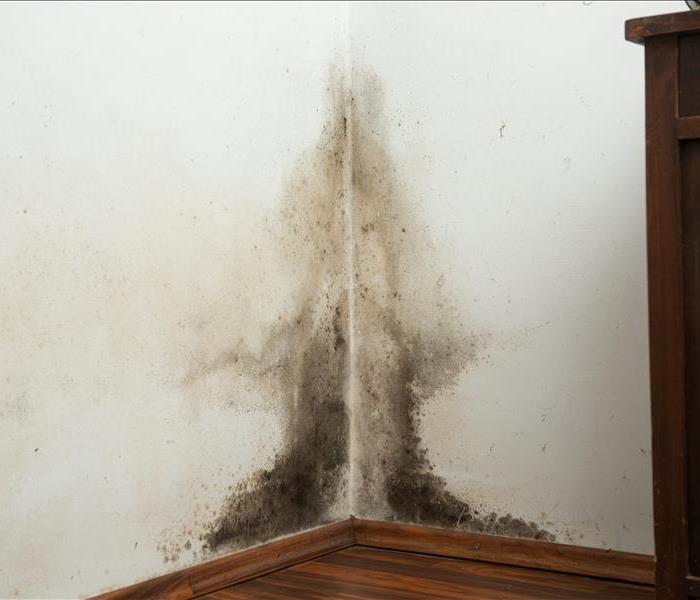 If your facing mold in your HVAC, contact a professional to prevent secondary damage.
If your facing mold in your HVAC, contact a professional to prevent secondary damage.
In this blog post, we'll explore an important topic that homeowners should be aware of: how mold can grow in HVAC (Heating, Ventilation, and Air Conditioning) systems. Understanding the factors that contribute to mold growth in HVAC systems is the first step in preventing this common issue.
Understanding HVAC Systems
HVAC systems are designed to regulate indoor temperature and air quality. While they play a crucial role in keeping your home comfortable, they can also become a breeding ground for mold under certain conditions.
How Does Mold Develop in HVAC Systems?
Moisture is the primary catalyst for mold growth, and HVAC systems can provide a conducive environment. When humidity levels are high, or if there's a leak or condensation within the system, moisture can accumulate.
HVAC systems have air filters that trap dust and debris. Over time, these filters can become clogged, creating a damp surface where mold spores can settle and thrive. Neglecting regular HVAC system maintenance can lead to mold problems. Dirty coils, ducts, and air handlers can provide the organic material and moisture necessary for mold growth. Inadequate ventilation in your home can also contribute to stagnant air within the HVAC system, which can create an ideal environment for mold growth.
How to Prevent Mold Growth in HVAC Systems
Schedule annual HVAC system inspections and maintenance to ensure that all components are clean and functioning properly. This includes cleaning coils, ducts, and changing air filters.
Keep indoor humidity levels below 50% to discourage mold growth. Use a hygrometer to measure humidity and consider using a dehumidifier if necessary. It is also important to replace air filters regularly, following the manufacturer's recommendations. This will not only improve air quality but also reduce the risk of mold growth. Lastly, ensure that your home has adequate ventilation to keep air circulating and prevent stagnant conditions within the HVAC system.
Mold growth in HVAC systems is a common concern for homeowners, but with proper maintenance and attention to humidity levels, it can be prevented. Regular HVAC system inspections and a focus on controlling moisture are key to keeping your HVAC system mold-free.
If you suspect mold growth in your HVAC system or are facing mold issues in your home, don't hesitate to contact SERVPRO® of Northeast Tucson, Oro Valley/Marana East for professional mold remediation and cleanup services. Our experienced team is ready to help you maintain a safe and comfortable living environment.
How Your HVAC Can Cause Water Damage
10/9/2023 (Permalink)
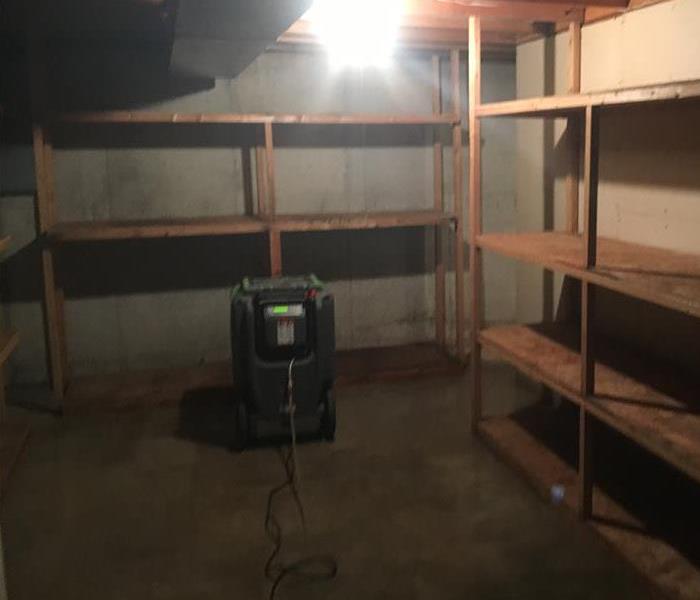 Water damage to your HVAC system in Tucson, AZ, is a concern that should not be overlooked.
Water damage to your HVAC system in Tucson, AZ, is a concern that should not be overlooked.
When it comes to water damage, your HVAC (Heating, Ventilation, and Air Conditioning) system can be vulnerable. In this blog, we'll delve into the potential causes of water damage to your HVAC system and provide you with essential tips for cleaning and restoration to keep your Tucson home comfortable and safe.
Understanding Water Damage to Your HVAC System
Water damage to your HVAC system can result from several sources, and it's crucial to recognize the signs:
Condensation Buildup: In Tucson's scorching summers, condensation can accumulate within your HVAC system. Over time, this moisture can lead to mold growth and component deterioration.
Clogged Drain Lines: Dust and debris can accumulate in your system's drain lines, causing blockages. This blockage can lead to water backup, affecting the efficiency of your HVAC system.
Monsoon Season: Tucson experiences monsoon storms, which can sometimes lead to water intrusion into your home. If your HVAC system is located in a vulnerable area, it could be exposed to excess moisture.
Cleaning and Restoration Tips for Your HVAC System
Protecting your HVAC system from water damage is essential to ensure it operates efficiently and maintains indoor air quality. Here's what you can do:
Regular Maintenance: Schedule routine maintenance for your HVAC system. A professional technician can inspect for any signs of water damage, clean components, and ensure proper drainage.
Clean or Replace Filters: Dirty or clogged filters can restrict airflow and contribute to moisture buildup. Clean or replace filters as recommended by the manufacturer.
Check Drain Lines: Inspect and clean your HVAC system's drain lines to prevent clogs. If you notice any blockages, use a mixture of vinegar and water to clear them.
Condensate Pan Maintenance: Regularly check and clean the condensate pan. Ensure it is properly aligned to drain excess moisture away from your HVAC system.
Seal Ductwork: Ensure that your ductwork is sealed properly to prevent outside moisture from infiltrating the system.
Elevate Equipment: If possible, elevate your HVAC equipment to protect it from potential flooding during monsoon season.
Professional Help
For more extensive water damage or mold issues within your HVAC system, it's crucial to consult with professionals experienced in water damage restoration and mold remediation. SERVPRO® of Northeast Tucson, Oro Valley/Marana East, is here to assist you with these complex situations, ensuring your HVAC system is thoroughly cleaned, repaired and restored to its optimal condition.
Water damage to your HVAC system in Tucson, AZ, is a concern that should not be overlooked, given our unique climate. Regular maintenance and timely intervention are the keys to keeping your HVAC system in top shape. If you encounter severe water damage issues or need professional assistance, don't hesitate to contact SERVPRO. We are your trusted local experts, ready to help you maintain a comfortable and safe indoor environment for your family.
The Environmental Impact of Storm Debris in Tucson, AZ
9/17/2023 (Permalink)
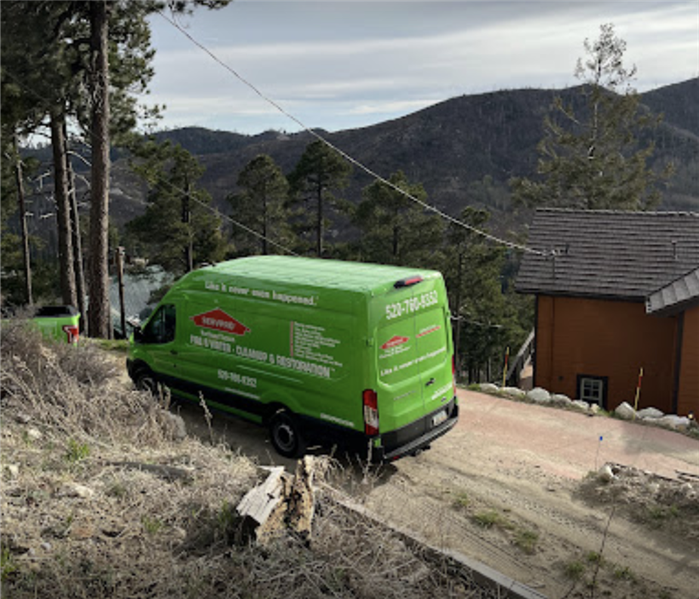 Our desert ecosystem is a delicate balance of plants, animals, and microorganisms adapted to survive in challenging conditions.
Our desert ecosystem is a delicate balance of plants, animals, and microorganisms adapted to survive in challenging conditions.
As residents of Tucson, we're well-acquainted with the unique charm and challenges that come with our local weather patterns. In this blog, we'll dive into a topic that concerns us all – the environmental impact of storm debris in our region. Join us as we explore the effects of storm debris on our ecosystem, learn how to mitigate its impact, and embrace sustainable practices to safeguard our homes and the environment we hold dear.
Storm Debris and Its Ripple Effect
Tucson's weather, while often sunny and dry, can experience intense storms that bring rain, winds, and occasional flash floods. These events can leave behind a trail of debris, impacting our surroundings in ways we might not always notice. From soil erosion to disruption of local wildlife habitats, we'll uncover the interconnected web of effects caused by storm debris in our unique environment.
Understanding Debris's Toll on Water Bodies
Tucson's arid landscape makes water a precious resource. When storm debris accumulates in water bodies, it can clog drainage systems and lead to contaminated runoff, affecting the quality of our water supply. We'll delve into the potential consequences for our local aquifers, rivers, and lakes, and discuss strategies to prevent debris-related water pollution.
Impact on Desert Flora and Fauna
Our desert ecosystem is a delicate balance of plants, animals, and microorganisms adapted to survive in challenging conditions. Storm debris can disrupt this balance by altering habitats, introducing invasive species, and causing harm to native flora and fauna. We'll explore how debris can affect biodiversity and discuss ways to preserve our local ecosystem's integrity.
Erosion, Soil Health, and Landscaping Challenges
Tucson's terrain is a blend of unique rock formations and desert soils. Storm debris, especially in the form of floods, can trigger erosion and compromise soil health. We'll examine the connection between storm debris and soil erosion, and offer insights into maintaining resilient landscaping practices that minimize erosion risks and promote soil conservation.
Tucson's enchanting landscapes, rich biodiversity, and tight-knit community make it a truly remarkable place to call home. By understanding the environmental impact of storm debris and embracing sustainable practices, we can ensure that our city continues to thrive for generations to come. Together, we can navigate the challenges, protect our environment, and create a more resilient Tucson, preserving its beauty and vibrancy through every storm.
The Renter's Guide to Fire Damage: Why Renter's Insurance is a Must-Have
8/15/2023 (Permalink)
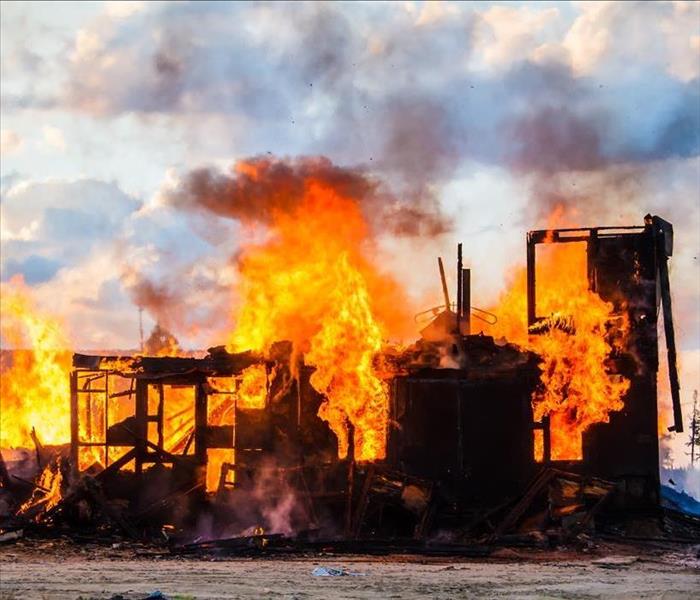 Renter's insurance offers an invaluable safety net that can ease the burden during challenging times.
Renter's insurance offers an invaluable safety net that can ease the burden during challenging times.
As a renter, protecting your belongings and ensuring your peace of mind should be top priorities. While many renters may overlook the importance of insurance, especially for fire-related risks, understanding the significance of renter's insurance is crucial. In this blog, we'll explore why renter's insurance is a must-have for every tenant, particularly when it comes to safeguarding against fire damage. Let's dive in and discover the invaluable benefits of renter's insurance in times of unforeseen fire emergencies.
Protection for Personal Belongings
Renter's insurance offers a safety net for your personal belongings in case of fire damage. If a fire breaks out in your rental property, your furniture, electronics, clothing, and other possessions could be significantly damaged or destroyed. Renter's insurance can help cover the cost of replacing or repairing these items, sparing you from substantial financial losses.
Temporary Housing Assistance
In the aftermath of a fire incident, your rental unit may become uninhabitable. Renter's insurance typically includes coverage for additional living expenses, enabling you to secure temporary housing and maintain your standard of living while your home undergoes repairs or renovations.
Liability Coverage
Renter's insurance not only protects your belongings but also provides liability coverage. If you accidentally cause a fire in your rental property that damages the building or harms another person, you could be held financially responsible. Renter's insurance can cover legal expenses, medical bills, and property damage claims up to your policy limits, offering essential liability protection.
Peace of Mind in Unforeseen Circumstances
Fires can be unpredictable and devastating, leaving renters emotionally and financially vulnerable. Renter's insurance offers peace of mind, knowing that you have a financial safety net in case of fire-related losses. This peace of mind allows you to focus on your well-being and rebuilding your life after such an unfortunate event.
Affordable Coverage Options
Contrary to common misconceptions, renter's insurance is generally affordable, making it an accessible form of protection for tenants. The cost of renter's insurance is often far less than homeowners' insurance since it only covers the renter's belongings and liability, not the structure of the property.
Customizable Coverage
Renter's insurance policies are customizable to suit your specific needs and budget. You can select coverage limits and endorsements tailored to your belongings and the risks you want to protect against, ensuring you get the coverage that best fits your circumstances.
As a renter, fire-related risks can be daunting, but renter's insurance offers an invaluable safety net that can ease the burden during challenging times. From protecting your personal belongings to offering liability coverage and temporary housing assistance, renter's insurance is a must-have for every tenant. With affordable and customizable options, it provides peace of mind and financial protection, allowing you to enjoy your rented space without worrying about the unforeseen. Prioritize your well-being and protect what matters most with renter's insurance – a valuable investment for your security and tranquility.
How to Prepare Your Home for the Summer
7/20/2023 (Permalink)
As the summer season approaches, it's essential to prepare your home for the challenges that come with warmer weather. From increased energy consumption to potential safety hazards, taking proactive steps can ensure a comfortable and worry-free summer for you and your family. In this blog, we will provide you with a comprehensive guide on how to prepare your home for the summer, covering important areas such as energy efficiency, maintenance, safety, and more.
Check and Maintain Your Air Conditioning System
The summer heat can put a strain on your air conditioning system. Start by scheduling a professional inspection and maintenance to ensure it's in optimal condition. Clean or replace air filters regularly, seal any leaks in ductwork, and consider installing a programmable thermostat for energy efficiency. These steps will help keep your home cool and reduce energy costs.
Prepare Your Outdoor Living Spaces
Make the most of the summer by preparing your outdoor areas. Clean and inspect your patio or deck, check for any loose boards or cracks, and apply a fresh coat of sealant if needed. Clean and arrange your outdoor furniture, ensuring it's in good condition. Create a welcoming and functional outdoor space for relaxation and entertainment.
Ensure Proper Insulation and Weatherstripping
To keep your home cool during the summer months, ensure proper insulation and weatherstripping. Inspect windows and doors for any gaps or cracks and seal them with weatherstripping or caulk. Adequate insulation will not only help maintain a comfortable indoor temperature but also improve energy efficiency and reduce utility bills.
Maintain Your Outdoor Landscape
Summer brings lush greenery, but it also requires regular maintenance. Trim trees and shrubs away from your home to prevent damage from overhanging branches or falling debris during storms. Keep your lawn well-watered and mowed to promote healthy growth and reduce fire hazards. Clear gutters and drains to prevent water damage and ensure proper drainage during heavy rainfall.
Check and Clean Your Pool or Water Features
If you have a pool or water feature, ensure they are ready for summer use. Check for any leaks, inspect the pump and filtration system, and clean or replace filters as needed. Maintain proper water chemistry by regularly testing and balancing the pool's pH levels. Following these steps will ensure a safe and enjoyable swimming experience for your family and guests.
Implement Energy-Saving Measures
Summer often brings increased energy consumption. Implement energy-saving measures to reduce costs and environmental impact. Use natural ventilation by opening windows during cooler nights and using ceiling fans to circulate air. Replace traditional light bulbs with energy-efficient LED bulbs and unplug electronic devices when not in use. These small changes can add up to significant energy savings over time.
Perform Safety Checks
Summer is a good time to perform safety checks throughout your home. Test smoke detectors and carbon monoxide alarms, replace batteries if needed, and ensure they are functioning correctly. Inspect and clean your outdoor grill, ensuring proper connections and safe usage. Review and update your family's emergency preparedness plan, including evacuation routes and contact information.
Preparing your home for the summer is a proactive way to ensure a comfortable, safe, and energy-efficient season. By following the tips and guidelines provided in this comprehensive guide, you can enjoy the summer months with peace of mind. Remember, regular maintenance, energy-saving measures, and attention to safety will go a long way in creating a pleasant and enjoyable living environment for you and your family.
Stay ahead of the summer heat and make the most of the sunny days by preparing your home now!

 24/7 Emergency Service
24/7 Emergency Service






